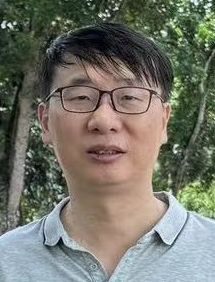1 Jorg Peters, 2024 SMA Fellow

Jorg Peters has made significant contributions to the field of geometric modeling, particularly in the areas of smooth surface algorithms and subdivision surfaces. His key research contributions include:
Smooth Surface Algorithms
Jorg Peters has worked extensively on smooth surface algorithms that ensure good shape and low degree, including the development of the Bi-3 spline and T-junction multi-sided surfaces. His collaboration with Kestutis Karciauskas led to advances in generalizing bicubic splines for irregular layouts, as highlighted in their 2015 SPM Best Paper.
Subdivision Surfaces
Jorg Peters also focused on subdivision surfaces, developing the concept of nested surface rings and spline surfaces with singularities. His work with Udo Reif and Kestutis Karciauskas on polyhedral splines has advanced the field, providing new methods for surface representation.
Lower Bound Proofs
In his early research, Jorg Peters contributed lower bound proofs for geometric constraints on curve networks, which are essential for smooth interpolation. His 2011 paper on smooth Bi-3 spline surfaces with minimal knots remains influential in the field.
Jorg Peters has chaired multiple conferences, including SPM, and has contributed to advancing geometric modeling through his work with polyhedral control nets and fast-contracting splines.
2 Ying He, 2024 SMA Fellow
Ying He has made key contributions in visual computing, focusing on geometric analysis and computation. His work spans discrete geodesics, 3D reconstruction, and 3D deep learning.
Discrete Geodesics
Ying He’s primary research focuses on computing geodesic distances on polyhedral surfaces, a fundamental problem in computational geometry with applications in sampling, segmentation, shape analysis, and remeshing. His contributions include polyline sources, curve shortening, and discrete wavefront propagation.
Graph-Based Methods
Ying He has developed graph-based methods like saddle vertex graphs (SVG) and discrete geodesic graphs (DGG), which leverage local geometric features for efficient geodesic computation. His research has shown that discrete geodesic problems, despite being global, can be solved efficiently using local structures.
Optimization and Neural Approaches
His more recent work includes optimization-based approaches and neural geodesics, highlighting his focus on improving accuracy and efficiency in geodesic computations through innovative techniques

